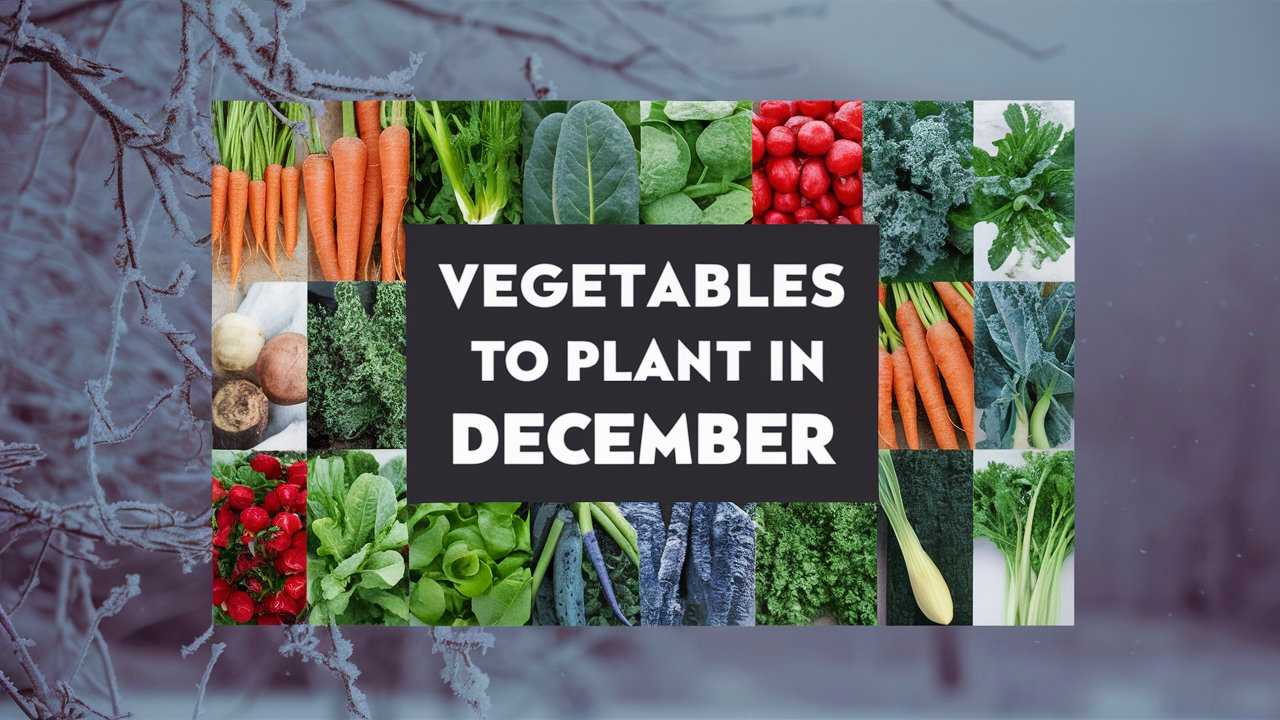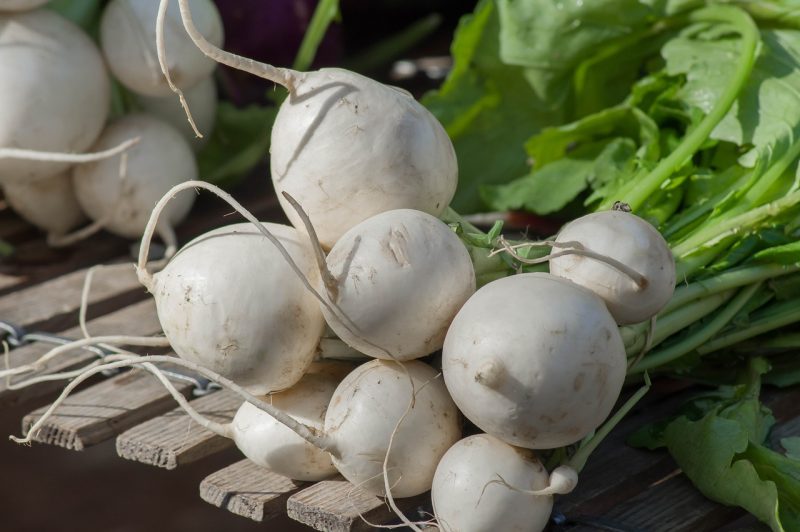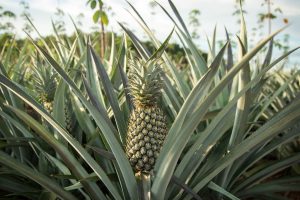As the colder months set in, many gardeners may feel the urge to hibernate, but December presents a unique opportunity for those who want to ensure their gardens remain productive year-round. While many people associate vegetable gardening with warmer seasons, certain veggies thrive even in the chill of winter.
Asparagus
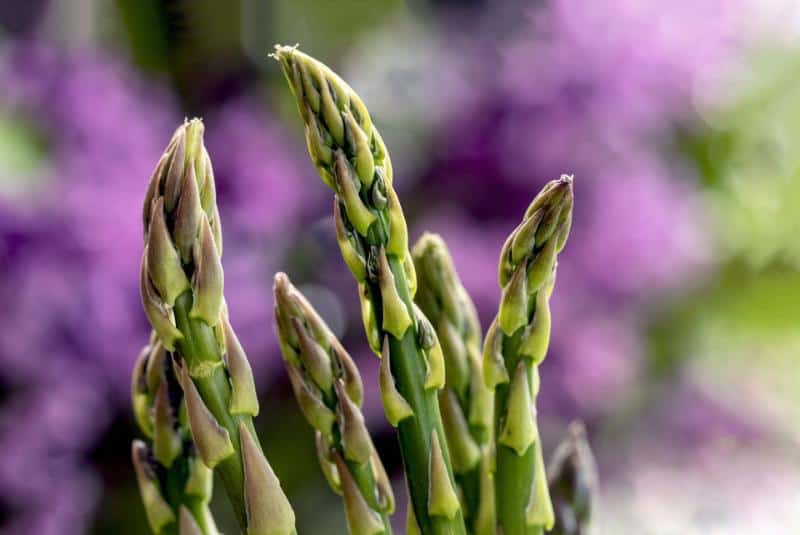
Asparagus is a perennial vegetable that rewards patience with several years of harvest. December is an ideal time to prepare your asparagus bed, particularly in regions where the ground doesn’t freeze solid. Begin by planting bare-root asparagus crowns, which are typically available at garden centers during this time. When selecting a site, opt for a sunny location with well-draining soil, as asparagus prefers full sunlight for at least six hours a day.
Before planting, it’s essential to amend the soil with compost or well-rotted manure to ensure it is nutrient-rich; asparagus is a heavy feeder. Dig trenches about 6-8 inches deep and place the crowns in the soil, spaced approximately 12-18 inches apart. Make sure to cover them lightly with soil and water well. As they grow, keep the area weed-free and mulch around your plants to retain moisture and suppress weeds. Given that it will take about three years before you can start harvesting, planting asparagus in December allows you to establish a robust bed that will produce abundant spears for decades to come.
Romaine Lettuce
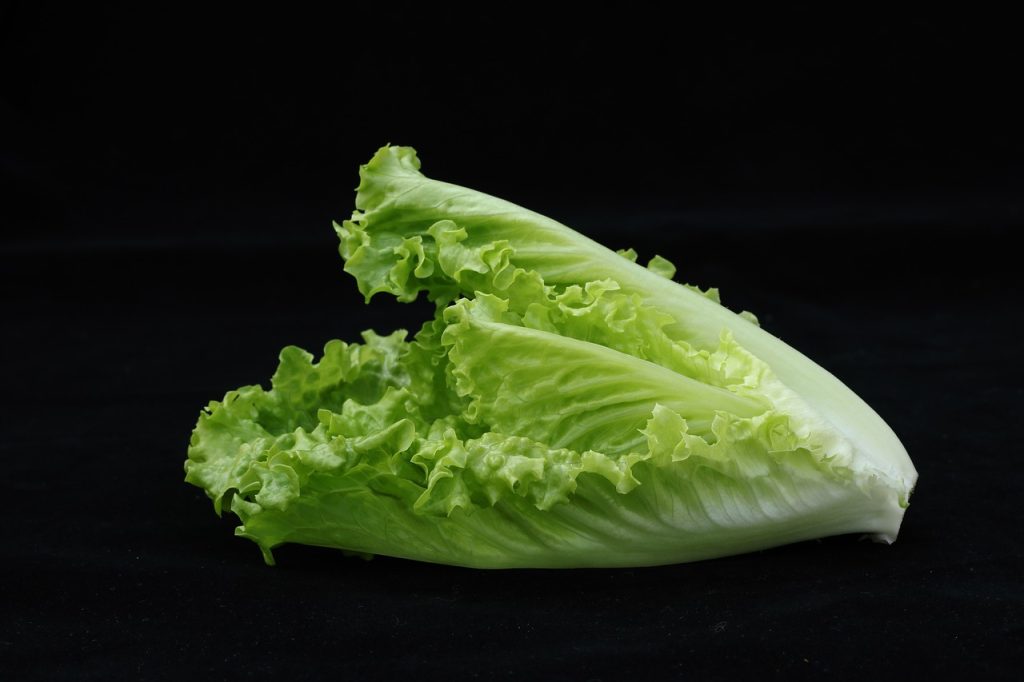
Romaine lettuce is a cool-season crop that thrives in the colder months, making it a fantastic choice for December planting. This leafy green prefers temperatures between 45°F and 65°F, which often occur during winter in many regions. When choosing to plant romaine in December, consider using a cold frame or row cover to protect your seedlings from harsh frost and wind.
Starting with quality seeds is crucial. Sow seeds directly into well-prepared, fertile soil enriched with organic matter. Aim for spacing of about 12 inches between plants to allow for adequate air circulation. Even in cooler temperatures, keep the soil moist but not waterlogged. Romaine lettuce grows quickly, typically ready for harvesting in about 60-75 days depending on the variety. This means you can expect fresh, crisp salads in early spring. Another advantage of planting in December is that the cooler weather can help develop a sweeter flavor in the leaves, making your romaine more delicious than lettuce grown in warmer months.
Radishes
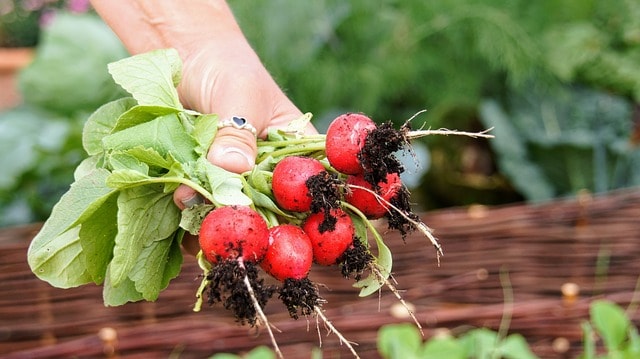
Radishes are a rapid-growing root vegetable that can be sown in December in many climates, especially in milder winter areas. Known for their ability to germinate quickly, radishes can be ready to harvest in as little as three to four weeks after planting. This vegetable is perfect for succession planting; sowing every couple of weeks can provide a continuous supply of fresh radishes throughout the winter months.
When planting radishes, select a variety suited for winter growth, such as the ‘French Breakfast’ or ‘Cherry Belle.’ Choose a sunny spot in your garden, and ensure the soil is light and well-draining, as radishes prefer not to be waterlogged. Broadcast the seeds thinly or create small rows, covering them loosely with soil. Keeping the soil consistently moist will aid germination; however, avoid overwatering to prevent rot. Radishes can also tolerate light frosts, which enhances their flavor and texture. By December’s end, you’ll be able to enjoy your homegrown radishes in salads, soups, or as a crisp snack.
Fava Beans
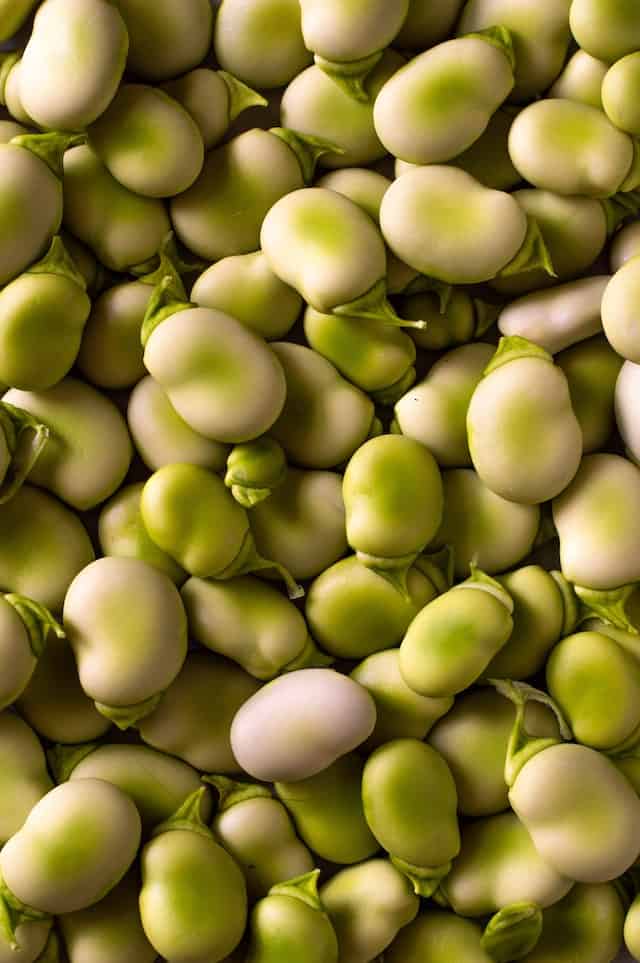
Fava beans, also known as broad beans, are a versatile and robust legume that thrives in cooler temperatures, making them an ideal choice for December planting in milder climates. As a nitrogen-fixing crop, fava beans enrich the soil by pulling nitrogen from the atmosphere and depositing it in the soil, benefiting the following crops planted in the same area.
For planting, select a variety suited for cooler weather, such as ‘Aquadulce.’ Sow the seeds directly into the garden bed about 2-4 inches apart and 1-2 inches deep, ensuring they receive ample sunlight. Fava beans prefer well-drained soil enriched with organic matter to support their growth. They generally germinate quickly, even in cooler soils, and can survive light frosts, which makes December a strategic time to establish them.
Harvesting fava beans is typically done in late spring or early summer, depending on when you’ve planted. Not only do these beans offer exquisite flavor in dishes, but they can also be consumed at different growth stages: young, tender pods can be picked early, while mature beans can be shelled for salads or pasta dishes. The addition of fava beans to your December planting list ensures a nutritious and productive harvest for the forthcoming months.
Garlic
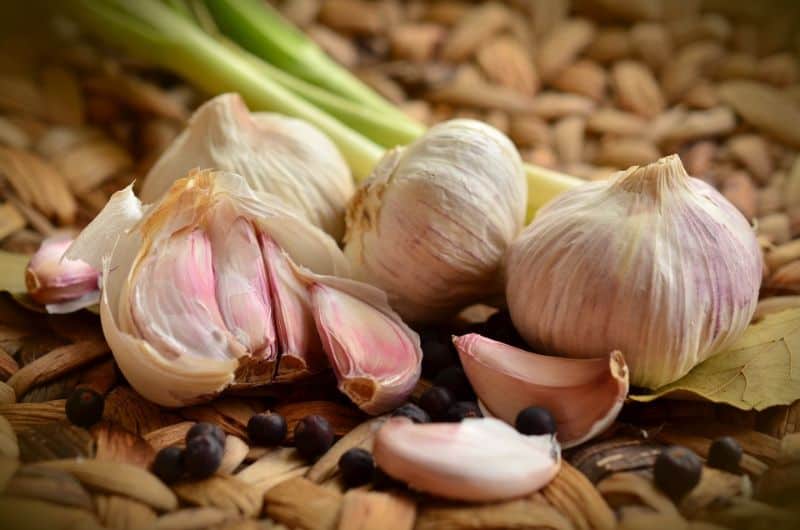
December is a prime time for planting garlic, as it benefits significantly from being in the ground before the onset of winter freezes. Garlic cloves should be planted in well-drained, nutrient-dense soil to ensure optimal growth and flavor. Choose high-quality seed garlic from a reputable source; organic varieties are often more resilient and flavorful.
Plant individual garlic cloves about 2-3 inches deep and spaced 4-6 inches apart in rows that are about 12 inches apart. It’s recommended to plant garlic in a sunny location, as it thrives in full sun. One key to successful garlic cultivation is mulching. After planting, cover the area with a layer of straw or leaves, which helps to regulate soil temperature, suppress weeds, and retain moisture.
Garlic benefits from the winter chill, which encourages a more robust bulb formation. By the time summer arrives, you can anticipate a lush harvest—typically around mid-summer to late summer, depending on the variety and local climate. In addition to their culinary uses, home-grown garlic is known for its health benefits, making it a valuable addition to your December planting endeavor.
Bok Choi or Pak Choy
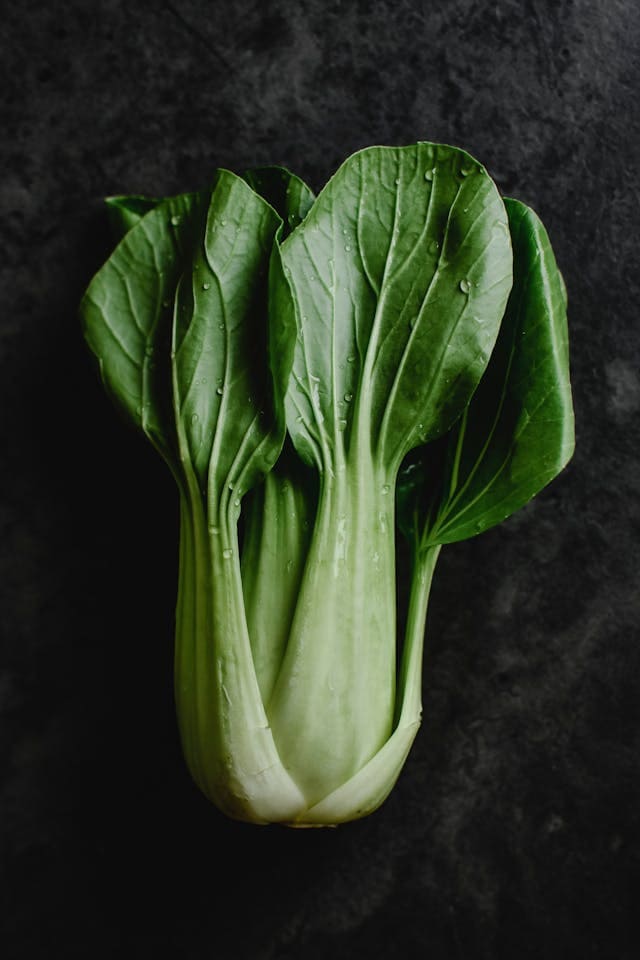
Bok choi, also known as bok choy or pak choy, is a popular Asian green that thrives in cold weather, making it an excellent candidate for December planting. This fast-growing leafy vegetable is prized for its crisp texture and delicate flavor, making it a staple in stir-fries, soups, and salads.
For a successful harvest, opt for seeds or seedlings of bok choy suited for cooler climates. Plant them about 6-8 inches apart in rows that are at least 12 inches apart. Bok choy prefers rich, fertile soil that has been amended with compost to provide plenty of nutrients. As a fast-growing crop, bok choy can be ready for harvest in as little as 30-45 days, allowing plenty of time to enjoy multiple harvests throughout the winter months.
Regular watering is critical, so keep the soil consistently moist but not soggy. Additionally, consider using a row cover to protect the young plants from extreme cold and harsh weather conditions. Bok choy is particularly frost-tolerant, and light frost can actually enhance its flavor, resulting in a mild sweetness that is highly desirable. With its rapid growth and delectable taste, bok choy is a perfect vegetable to plant in December, ensuring home cooks have fresh greens on hand during the colder months.
Kale

Kale is an exceptionally versatile and nutritious vegetable that flourishes in the chill of winter. Often regarded as a superfood, kale is packed with vitamins A, C, and K, as well as essential minerals like calcium and magnesium. The cool temperatures of winter can actually enhance kale’s flavor, often resulting in a sweeter, more tender leaf than those grown in hotter months.
When planting kale in December, selecting the right variety is key. Types such as ‘Winterbor,’ with its curly leaves, or ‘Lacinato,’ known for its flat, dark green leaves, are particularly well-suited for winter growing. It’s best to plant seeds directly in garden beds or containers with nutrient-rich, well-draining soil. Make sure to space the seeds about 12 inches apart to accommodate their growth, as kale plants can become quite large.
Kale is a cut-and-come-again crop, meaning you can harvest leaves as needed without uprooting the entire plant. This allows for a continual supply of fresh greens throughout the winter. Additionally, if you experience unexpected cold snaps, covering your kale with floating row covers can maintain warmth and protect the plants from frost. By the time spring arrives, you can look forward to enjoying abundant, healthy kale in salads, smoothies, and various cooked dishes.
Mustard Greens
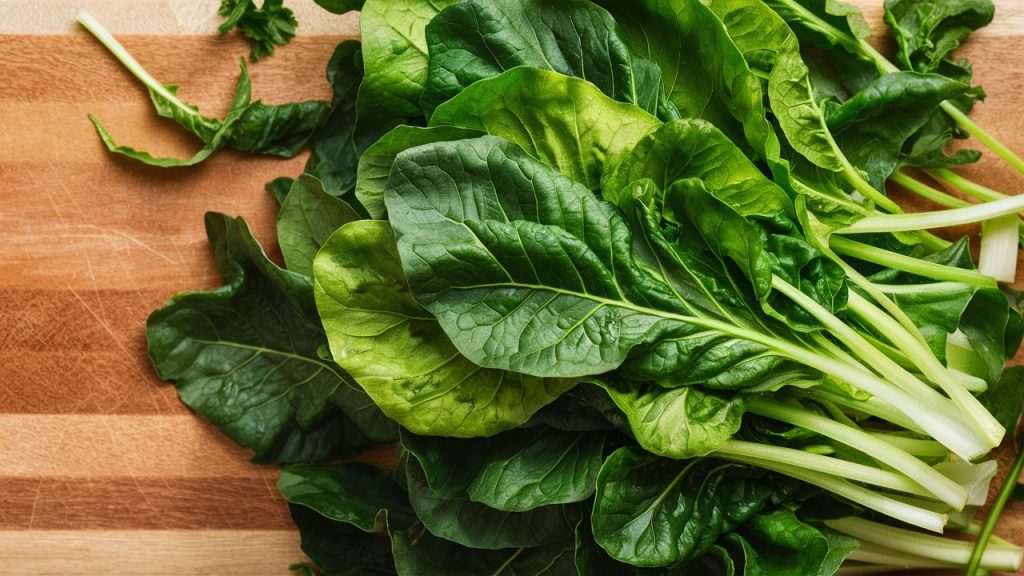
Mustard greens, revered for their peppery flavor and robust nutritional profile, are another excellent choice for December planting. Rich in vitamins A, C, K, and folate, these leafy greens are a staple in many Asian and Southern cuisines. Their adaptability to cooler weather makes them ideal candidates for winter gardens.
When planting mustard greens, choose varieties like ‘Green Wave’ or ‘Southern Giant,’ which are known for their hardy nature. Directly sow seeds in rows, space them approximately 6 inches apart, and cover lightly with soil. Mustard greens germinate quickly, typically within a week, and their fast growth means they can be harvested as soon as 30 days after planting.
It’s important to maintain consistent soil moisture throughout their growth, as mustard greens thrive in well-watered conditions. They are also relatively compact, making them suitable for small garden spaces or container gardening. Harvest by cutting the outer leaves, allowing the inner leaves to continue growing for future harvests. Their peppery bite adds an exciting flavor to salads, stir-fries, and soups, making them a valuable addition to winter meals.
Spinach
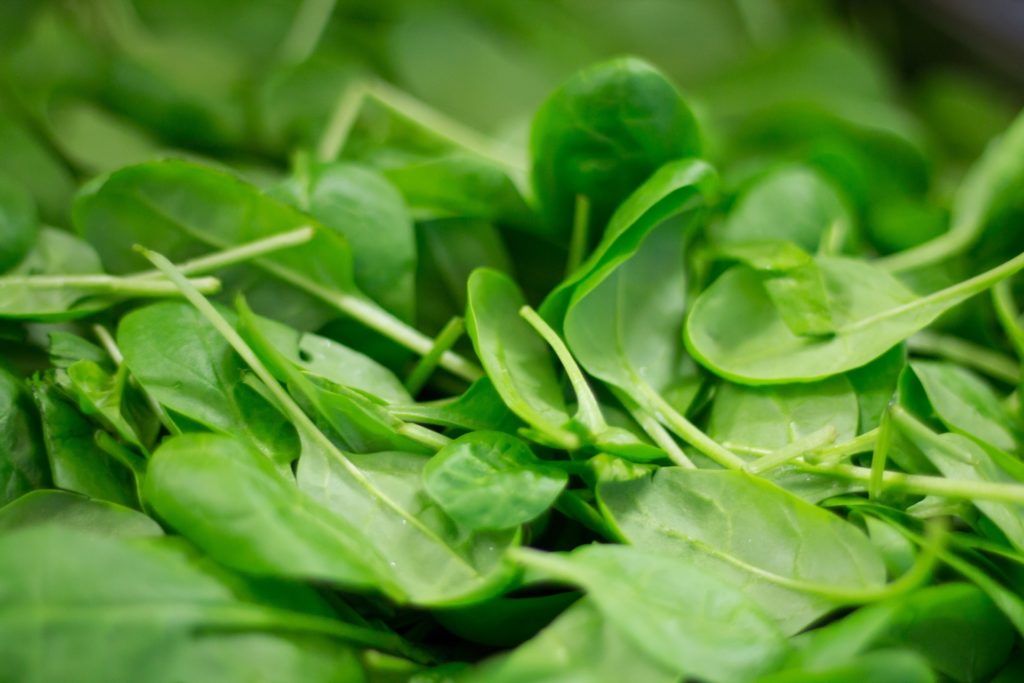
Spinach is one of the top choices for winter gardening, prized for its tender leaves and nutritional benefits. High in iron, calcium, and vitamins A and C, spinach is a powerhouse green that can thrive even in the coldest months. December is a great time to sow spinach, as its growth can be accelerated by the cooler temperatures, which often deter the pests that typically invade gardens in warmer months.
For December planting, select varieties like ‘Bloomsdale’ or ‘Teton’ that are known for their ability to deliver good yields and resilience in cooler weather. Sow seeds directly into well-draining, fertile soil, spacing them about 1-2 inches apart and covering them lightly with soil. Spinach seeds are robust and can germinate even in temperatures as low as 40°F.
Regular watering is essential, especially during the early growth stages; however, avoid waterlogged conditions to prevent root rot. A layer of mulch can help retain moisture and moderate soil temperature during extreme cold. Spinach can be harvested in two ways: by cutting the outer leaves as they mature, which encourages further growth, or pulling the entire plant when it reaches the desired size. With a short growing cycle, spinach can provide a quick harvest, making it an ideal vegetable for a winter planting scheme.
Turnips
Turnips are a fantastic root vegetable to plant in December, known for their versatility in the kitchen and nutritional benefits. These hardy plants grow well in cooler temperatures, becoming sweeter as they experience frost, which allows them to thrive in winter gardens.
When planting turnips, choose varieties such as ‘Hakurei,’ which are known for their sweet flavor, or ‘Purple Top White Globe’ for a classic choice. Sow seeds directly into well-drained soil about 1/2 inch deep and thin them to a spacing of 4-6 inches apart once they germinate. It’s advisable to prepare the soil with compost to enrich it, as turnips enjoy nutrient-dense environments.
Turnips are quick growers, typically maturing in 60 days or less, and can be harvested at any size for different culinary uses. Young turnips can be enjoyed in salads or as crunchy snacks, while larger specimens are excellent for roasting, mashing, or adding to hearty winter stews. Additionally, both the greens and roots of turnips are edible, making them a dual-purpose vegetable perfect for maximizing space in the garden.
Globe Onions

Globe onions are a staple in many kitchens around the world, and planting them in December is a great way to ensure a robust harvest come summer. These onions thrive in cooler weather, and by planting sets or seedlings during this month, you can take advantage of their long growing season.
For December planting, opt for onion sets or transplants rather than seeds to simplify the process and accelerate growth. Plant them about 1-2 inches deep, spaced 4-6 inches apart in well-draining soil rich in organic matter. The cold temperatures of winter help establish the roots, leading to stronger plants that will flourish as the weather warms up.
Globe onions typically require around 100-120 days from planting until harvest. As the bulbs begin to mature in late spring to early summer, they will grow larger and develop their characteristic sweet and pungent flavors. Monitoring the moisture levels and ensuring consistent watering is important, as onions prefer evenly moist conditions. Once ready for harvest, cure the onions in a dry, airy place to enhance their storage capabilities.
Whether used in everyday cooking or reserved for special recipes, globe onions are an essential addition to any winter garden.
Peas
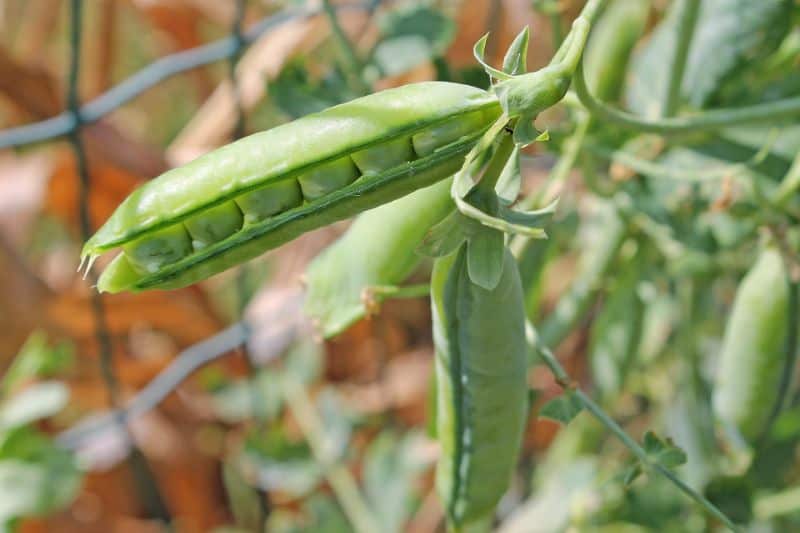
Peas are one of the most rewarding vegetables to plant in December, particularly in regions with milder winters where the soil doesn’t freeze. This cool-season crop boasts a crisp sweetness that enhances numerous dishes, and planting them in December allows for an early spring harvest. Peas are often best sown directly into the soil, as they do not transplant well.
When planting peas, choose varieties like ‘Snap’ or ‘Shelling’ peas, which thrive in cooler temperatures. Prepare a sunny bed with well-draining soil and add compost to enhance fertility. Sow the seeds about 1-2 inches deep and space them roughly 2 inches apart. Adding trellises or stakes can support the climbing varieties, maximizing space and improving air circulation.
Peas typically germinate in 7 to 14 days, and they can withstand frost, making them a perfect candidate for December planting. Regular watering is essential; however, avoid overwatering to prevent rot. As spring nears, you’ll be greeted with delicate, fragrant flowers followed by pods full of sweet peas. Harvesting peas at their peak sweetness, when the pods are plump but still bright green, will ensure the best flavor in your culinary creations. Fresh peas can be enjoyed raw, steamed, or incorporated into various recipes, from salads to stews.
Carrots
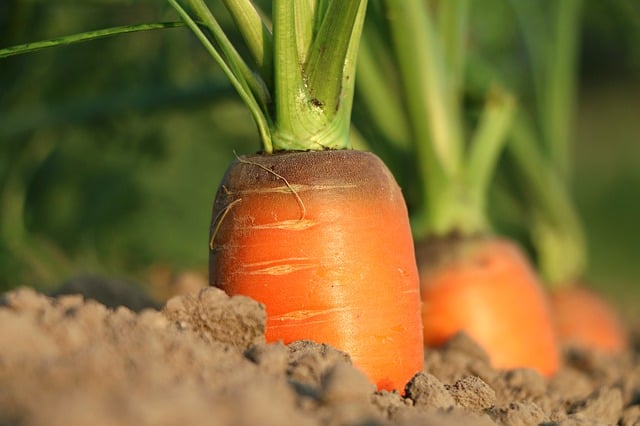
Carrots are another excellent vegetable choice for December planting, particularly in areas with favorable climates. These root vegetables thrive in cool weather, and when sown in late fall or early winter, they benefit from frost, which enhances their sweetness and flavor.
To plant carrots, select varieties suited for winter growth, such as ‘Danvers’ or ‘Nantes,’ both of which are known for their sweetness and crunchy texture. Prepare a loose, sandy soil free from stones to ensure proper root development. Sow seeds directly into the soil about 1/4 inch deep and thin them after germination to 2-4 inches apart, allowing each carrot enough space to grow unhindered.
Carrots germinate slowly, so patience is key—germination can take up to three weeks. These vegetables require consistent moisture, especially if you’re planting over the winter months. Mulching around the plants can help retain soil moisture and prevent frost heave. As spring approaches, you can begin harvesting your carrots, starting with smaller ones for fresh salads and allowing larger ones to grow to full size. Freshly harvested carrots are a culinary delight, delicious raw, roasted, or added to soups and casseroles.
Rocket (Arugula)

Rocket, also known as arugula, is a fast-growing leafy green that thrives in cooler temperatures, making it a perfect choice for December planting. This peppery, flavorful green can elevate salads, sandwiches, and a variety of dishes with its distinct bite. Plus, its rapid growth means you can enjoy fresh greens within weeks of sowing.
For planting arugula, choose a well-draining spot with partial to full sunlight. Sow seeds directly into well-prepared soil, planting them 1/4 inch deep and spacing them about 2-3 inches apart. Rocket grows quickly; you can expect germination within 5 to 10 days, making it a rewarding crop for impatient gardeners.
Regular harvesting can encourage further growth, allowing you to enjoy tender leaves throughout the winter months. Rocket can be cut back to regenerate multiple times, providing a continuous harvest of fresh greens. Its robust flavor pairs well with a plethora of ingredients, from herbs to cheeses, and it can be used in everything from salads to pesto. Rocket is also known for its health benefits, being rich in vitamins A, C, and K as well as essential minerals like calcium and potassium.
White Radish
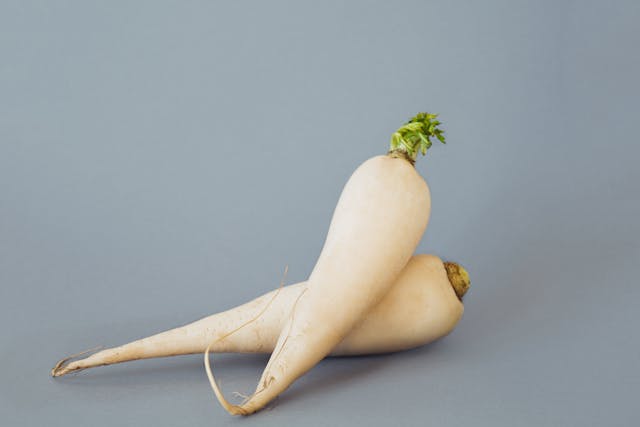
White radish, often referred to as daikon or long radish, is a fantastic choice for December planting. Known for its crisp texture and mild flavor, this versatile vegetable can be enjoyed raw in salads, pickled, or cooked in various dishes. White radishes are known for their ability to grow in less than ideal winter conditions, making them resilient additions to your garden.
When planting white radish, select a well-draining soil enriched with organic matter to promote healthy growth. Sow seeds about 1/2 inch deep and space them roughly 2-4 inches apart, ensuring adequate room for the roots to develop properly. These radishes germinate quickly, typically sprouting within a week, and can grow rapidly to maturity, often ready for harvest in just 40-60 days.
One of the unique aspects of white radishes is their taste, which tends to be milder and sweeter than their red counterparts. The roots can be harvested at various stages, depending on your preference. Young radishes add a refreshing crunch to salads, while older ones can be used in warming winter stir-fries and stews. Additionally, the tops of white radishes are edible and can be sautéed or used similarly to other leafy greens, providing an extra layer of nutrition and flavor from your crop.
Dill
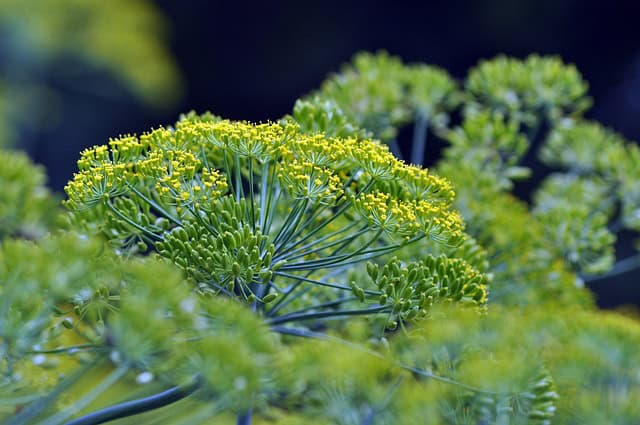
Dill is an aromatic herb that can be successfully planted in December, especially in milder climates. Known for its delicate fronds and distinctive flavor, dill is used widely in culinary applications, from seasoning pickles to enhancing fish dishes and salads. Its vibrant greenery brings freshness to winter meals while also offering health benefits, such as rich levels of antioxidants and essential vitamins.
To grow dill in the winter, choose a location with ample sunlight and well-draining soil. Sow seeds approximately 1/4 inch deep, spacing them about 12 inches apart to allow the plants ample room to spread. Dill is typically quick to germinate, sprouting within a week to ten days. Despite being a tender herb, dill benefits from cooler temperatures, which can enhance its flavor profile.
Harvesting dill is about timing; the leaves are best picked when they are young and tender, as they lose their potency as they mature. Cut the fronds just above the base of the plant to encourage further growth; dill can be harvested multiple times throughout the season. Additionally, dill seeds can be collected from the flowering heads, providing a secondary crop that can be used in cooking or for seasoning pickles. This herb not only delivers rich flavor but also serves as a natural pest deterrent in the garden, helping to protect your other crops.
Chicory and Chicons
Chicory is a hardy winter vegetable that can be planted in December, prized for its unique, slightly bitter flavor profile. The plant grows large, dandelion-like leaves that are great for salads, while the roots can be roasted and brewed as a coffee substitute. Chicory also includes a special winter treat known as chicons, which are young shoots that develop when chicory is forced indoors, resulting in tender, pale leaves.
To successfully grow chicory, plant the seeds in garden beds with excellent drainage and enriched, organic soil. Sow them about 1/4 to 1/2 inch deep, spacing the seeds around 8-12 inches apart to accommodate their spread. While chicory can withstand frost, it is important to provide protection against extreme cold; using row covers is an effective way to insulate the plants during harsh weather.
Chicory typically takes around 65-80 days to mature, and the greens can be harvested for salads or sautéed. To grow chicons, chicory plants should be dug up and placed in darkness to encourage the tender shoots to develop. This process usually takes about three to four weeks. Chicons are sought after for their delicate flavor and are often used in gourmet dishes.
Chicory and its chicons not only add a unique taste to winter meals but also boast numerous health benefits, including being high in fiber, vitamins, and minerals. By planting chicory in December, you can enjoy both its robust leaves and the sophisticated flavor of chicons in your winter culinary creations.
Cress
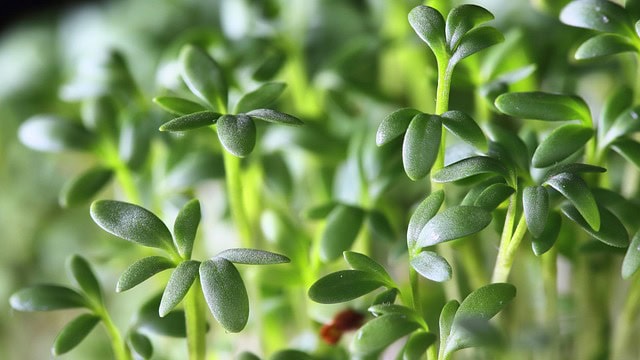
Cress, specifically garden cress (Lepidium sativum), is a fast-growing, nutrient-rich herb that is perfect for December planting. This peppery green is commonly used in salads, sandwiches, and garnishes, bringing a flavorful punch to your dishes. Cress is known for its high levels of vitamins A, C, and K, as well as antioxidants, making it a beneficial addition to any meal.
Cress is incredibly easy and quick to cultivate. You can sow seeds directly into well-drained soil, covering them lightly with a thin layer of soil, or simply scatter them on the surface of a moist growing medium. Lightly mist the seeds to ensure they’re adequately watered. Cress germinates in as little as 3 to 7 days, allowing for quick harvests within two weeks of planting.
This herb does best in cooler temperatures, making December an ideal time for planting. You can grow cress in garden beds, containers, or even indoors on a windowsill, providing flexibility for your gardening endeavors. Regularly snip the young leaves to promote bushier growth and prevent the plants from bolting as temperatures warm. Fresh garden cress adds a delightful zest to salads and soups, and it can also be used to make refreshing pesto or blended into smoothies for an extra nutrient boost.
Lamb’s Lettuce

Lamb’s lettuce, also known as corn salad or mâche, is a charming winter vegetable that thrives in cooler weather and is particularly well-suited for December planting. This hardy leafy green has a delicate, slightly nutty flavor and a soft texture that makes it a delightful addition to salads. It’s a great source of vitamins and minerals, including vitamin C and iron, which are essential during the winter months.
When planting lamb’s lettuce, choose a sunny spot with well-draining soil. Sow the seeds directly into the ground about 1/4 inch deep, keeping them spaced around 3-6 inches apart to allow for proper growth. Lamb’s lettuce is quite cold-hardy and can tolerate frost, making it an excellent option for winter gardening.
Germination can take up to two weeks, and once established, the plants will continue to produce tender leaves throughout the cold season. Harvest lamb’s lettuce by snipping the outer leaves as needed, which encourages further growth in the center. This lettuce is versatile in the kitchen and can be used fresh in salads, paired with tangy dressings, or incorporated into warm dishes such as soups and quiches.


